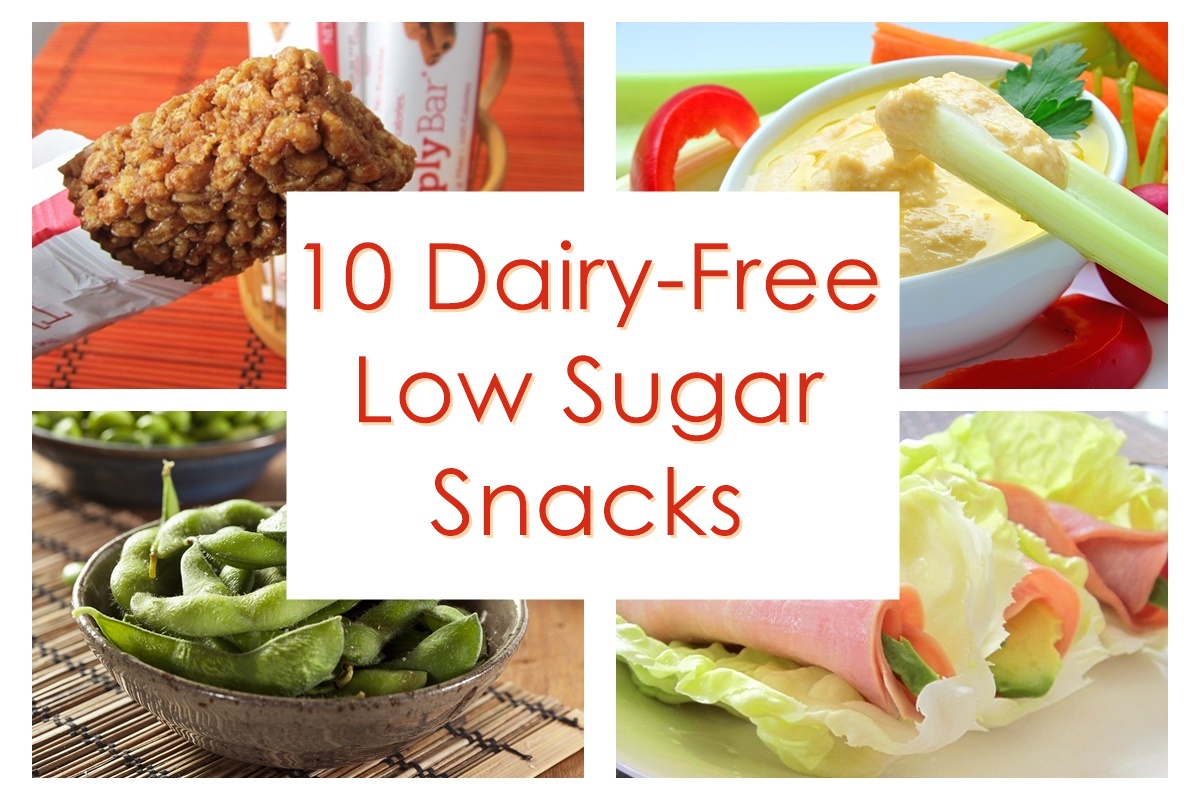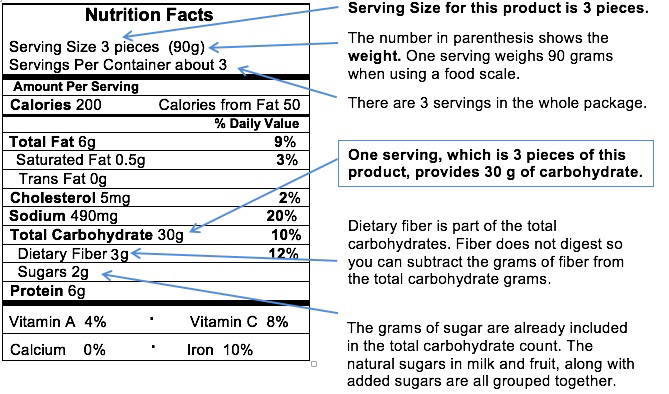40 understanding sugar content food labels
What are other names for sugar found on food labels? Here's a rundown of 56 sugar-related common names to keep an eye on: Malted barley. Barbados sugar is made from sugar cane. Sugar made from beets. Brown sugar is a kind of sugar that has a brown. Syrup with butter. Juice from sugar cane. Sugar made from cane. How To Understand Food Nutrition Labels - restaurantware.com If a food label says that a product is "high in protein," this means that it contains 20% or more of the daily recommended intake. "Very high in protein" means that the food contains 50% or more of the recommended amount. So when you're looking for healthy, high-protein food, be sure to check the label carefully.
1.2.1. Learning From Food Labels - Fundamentals of Health and Physical ... how much sugar and other nutrients (like sodium) are in their food, and that 5% or less is a little, and 15% or more is a lot. Figure 1.2.1.2 Nutrition facts table changes Reading the Label The first part of the Nutrition Facts panel gives you information on the serving size and how many servings are in the container.

Understanding sugar content food labels
Nutrition Labelling and Claims - The Canadian Sugar Institute Reading food labels can be confusing. Currently, information about sugars can be found in three areas on food and beverage labels: The Nutrition Facts table. This lists the amount of total carbohydrate, including total sugars in a stated serving size. The List of Ingredients. How To Read And Understand Nutritional Labels | dbl-diabetes European regulations require that nutritional labels for products show the quantities, per 100 g or 100 ml, of: fat (grams), saturated fat (grams), carbohydrates (grams), of which sugars (grams), protein (grams), salt (grams). Sometimes, these values may also be expressed per serving, but it's not required. How to Read Food Labels | mySugr That's why food labels can be an excellent tool. Look at the total carbohydrates, not just the sugar. Total carbohydrates will include sugar, fiber, and complex carbs. Focusing just on sugar content could keep you from eating nutritious foods that have natural sugar, like milk or fruit.
Understanding sugar content food labels. Fats, sugar, carbs: How to read a food label (and seven ... - Good Food Keeping our intake of added sugars as low as possible is important. Foods that are less than 10 per cent sugars or that contain less than 5 grams of added sugars are considered low-sugar foods but keep in mind that fresh fruits and dairy also contain some naturally occurring sugars. FDA Clarifies Labeling Rules for Quantitative Claims About Sugar While FDA's clarification resolves an important point of contention in recent consumer class actions, we caution that the general requirements for nutrient content claims do apply to the claims ... Food Label Reading - What You Need to Know - Drugs.com Added fiber means that 2.5g or more fiber have been added to a food. Free: Sugar-free means the food has less than 1/2g (0.5g) of added sugar per serving. Calorie-free means the food has fewer than 5 calories per serving. Fat-free means the food has less than 1/2g of total fat per serving. Fat contents below 1/2g are not measured. What are 10 names for added sugars on food labels? The quantity of sugars in one serving of food is shown on the Nutrition Facts Label on food and beverage packaging in grams (g). Because sugar has no percent Daily Value ( percent DV), use grams (g) as a reference. On a food box, look for added sugars in the ingredient list. What is the term for sugar? sugar's synonyms carbohydrate. candy. caramel.
The Basics of the Nutrition Facts Label - Academy of Nutrition and ... The following is a quick guide to reading the Nutrition Facts label. Step 1: Start with the Serving Size Look here for both the serving size (the amount people typically eat at one time) and the number of servings in the package. Compare your portion size (the amount you actually eat) to the serving size listed on the panel. What To Look For On Nutrition Labels & Why It Matters Our calories are virtually the same as is the amount of protein. Of course with a protein powder, looking for the most amount of protein is what gives you that desired muscle growth and enhanced recovery. Next is to look at the amount of carbs and fat. Both these products have 2 grams of carbs which isn't anything crazy in the grand scheme of ... Understanding Nutrition Labels - Facty Health Understanding Nutrition Labels. Food manufacturing companies in the U.S. are required by law to label all food products. They are legally required to provide information about calories, fat, sugar, salt, and nutritional values so that consumers can make informed decisions about their purchases. A lot of this information can feel alien, though ... Understanding Food Labels and Ingredient Lists: FAQs and Do's ... - AFPA Foods with insignificant amounts of the nutrients on the required label, such as coffee, tea, spices, flavor extracts, and food colors. These may contain ingredient labels but are unlikely to contain nutrition facts labels. Packaged single-ingredient meat products, such as deer, bison, rabbit, quail, wild turkey, and ostrich
How To Read Food and Beverage Labels - National Institute on Aging At the top of the Nutrition Facts label, you will find the total number of servings in the container and the food or beverage's serving size. The serving size on the label is based on the amount of food that people may typically eat at one time and is not a recommendation of how much to eat. Read more about serving and portion sizes. Sugar substitutes trend natural, clean label - Food Beverage Insider The deluge of natural sweeteners on the market—paired with the increasing stigma surrounding sugar—explains why refined sugar's market share is dropping as the years go by. In 2012, Mintel noted, sugar's share of the sweetener market was 52.5%; by 2020, though it still leads the market, its share strength fell to 39.7%. Understanding Nutrition Labels - News-Medical.net Health experts suggest that nutrients like saturated fats, added sugars, and sodium should have a low %DV. Whereas, nutrients like vitamin D, potassium, and dietary fibers should have a high %DV.... Consumers' Response to Sugar Label Formats in Packaged Foods ... - PubMed This study assessed the effect of exposure to different sugar labels on consumers' understanding of the sugar content of foods and their food choices. In the first phase, five focus groups were conducted with a convenience sample of Brazilian adults to explore their perceptions about food labelling in general and sugar labelling in particular.

Listing added sugar on food labels would improve health and extend lives, study suggests | MinnPost
How to Read Food Labels Like a Nutritionist | HUM Nutrition Blog Labels list ingredients from the most to least abundant. If a package indicates that additives are "less than two percent by volume," opt for that over a product with no indicators, advises Samuel. Other ingredients Nelson says to avoid or limit MSG (found in many dressings, sauces, meats, and cheeses) Hydrogenated oils Added processed sugars
Added Sugars on the New Nutrition Facts Label | FDA Labels for foods and beverages with added sugars will list the number of grams and the percent Daily Value (%DV) for added sugars within the Nutrition Facts label. Having the word "includes" before...
This Is How to Read a Nutrition Facts Label on the Keto Diet Sugars Protein Vitamin A Vitamin C Calcium Iron Since the 1990s, some changes have been made, including which nutrients manufacturers must clearly list on labels. [ *] Nutrients like vitamin A and vitamin C are no longer required, while vitamin D, potassium, "added sugars," and trans fats must appear on labels [ * ].
Consumers' Response to Sugar Label Formats in Packaged Foods: A Multi ... Providing information about the sugar content of packaged foods on product labels is an important strategy to lower consumers' sugar intake. This study assessed the effect of exposure to different sugar labels on consumers' understanding of the sugar content of foods and their food choices.
How to Read Nutrition Labels for Sugar - hekagoodfoods Now that you know where to locate the label, let's take a closer look at added sugar nutrition facts. Nutritional information is divided into the following five major categories: Fat. Cholesterol. Sodium. Total carbohydrates. Protein. Since sugar is a type of carbohydrate, it's listed underneath the "total carbohydrates" section.
Reading food labels and choosing healthy kids snacks | Bounty Parents Make sure you look past the packaging and read the ingredients that have gone into the product. This product gives us the best of both worlds, cute packaging and real food ingredients: Sprout Organic Chocolate Brownie Kids Bar 30g. Sprout Organic's plant-based snack bars are a healthy option. 2.
How to Understand and Use the Nutrition Facts Label | FDA Added Sugars on the Nutrition Facts label include sugars that are added during the processing of foods (such as sucrose or dextrose), foods packaged as sweeteners (such as table sugar), sugars from...
How to Read a Nutrition Facts Label | Everyday Health "Added sugars are one of the newer features on the nutrition facts label and are an indication of how much sugar has been added to the product in manufacturing," says Goergen. Some sugars, like...
Reading Food Labels - What You Need to Know - Drugs.com Sugars are another type of carbohydrate in food. The amount of sugar listed on the label is part of the total carbohydrates found in the food. Sugar includes the naturally sweet part of fruit and other foods as well as added sweeteners. Most people should limit foods high in sugar. Protein: The amount of protein in one serving is listed in grams.
Decoding food labels: Essential things to consider Instead: Look for artificial sweeteners and sugar content on the pack. Made with real fruit. What you think: Contains real fruit and is healthy. What it actually means: May have used a part of fruit during processing. Instead: Buy foods with 100 per cent real fruit labels. Zero transfat. What you think: Contains no trans fat/heart healthy. What it actually means: May contain 0.5 per cent ...
How to Read Food Labels | mySugr That's why food labels can be an excellent tool. Look at the total carbohydrates, not just the sugar. Total carbohydrates will include sugar, fiber, and complex carbs. Focusing just on sugar content could keep you from eating nutritious foods that have natural sugar, like milk or fruit.
How To Read And Understand Nutritional Labels | dbl-diabetes European regulations require that nutritional labels for products show the quantities, per 100 g or 100 ml, of: fat (grams), saturated fat (grams), carbohydrates (grams), of which sugars (grams), protein (grams), salt (grams). Sometimes, these values may also be expressed per serving, but it's not required.
Nutrition Labelling and Claims - The Canadian Sugar Institute Reading food labels can be confusing. Currently, information about sugars can be found in three areas on food and beverage labels: The Nutrition Facts table. This lists the amount of total carbohydrate, including total sugars in a stated serving size. The List of Ingredients.














Post a Comment for "40 understanding sugar content food labels"